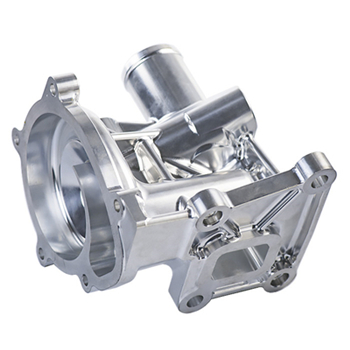What are CNC Turning Parts
Release time:01-06-2023

What are CNC Turning Parts?
CNC turning parts refer to the components created through the CNC turning process. CNC turning is a subtractive manufacturing technique where a lathe machine rotates a workpiece while a cutting tool removes excess material to shape it into the desired form. The resulting parts are often cylindrical or conical in shape and can be customized to meet specific requirements.
How CNC Turning Parts Work
CNC turning parts are produced using specialized machines called CNC lathes. These lathes are equipped with computer numerical control (CNC) systems that control the movement of the cutting tool and the rotation of the workpiece. The CNC system receives instructions from a computer program, which guides the machine's actions with precise measurements and coordinates. This automation allows for highly accurate and repeatable machining processes.
Advantages of CNC Turning Parts
CNC turning parts offer several advantages over traditional machining methods. Firstly, CNC turning allows for high precision and tight tolerances, ensuring consistent quality in the manufactured components. The computer-controlled process reduces the risk of human error and enables complex geometries to be machined with ease. Additionally, CNC turning is a cost-effective solution for both small-scale and large-scale production, as it minimizes material waste and requires less manual labor.
Common Applications of CNC Turning Parts
CNC turning parts find applications in various industries, including automotive, aerospace, medical, and electronics. They are used to create components such as shafts, valves, connectors, bushings, and more. The precise and reliable nature of CNC turning makes it ideal for manufacturing parts that require high accuracy and dimensional stability. From intricate medical implants to critical aerospace components, CNC turning plays a crucial role in modern manufacturing.
Factors to Consider when Choosing CNC Turning Parts
When selecting CNC turning parts, there are several factors to consider. Material compatibility is one of the primary considerations. Different materials, such as aluminum, steel, brass, and plastics, have varying properties and require specific machining techniques. It is important to choose a CNC turning part that can withstand the intended application's environmental conditions and demands. Other factors include size, complexity, cost, and the supplier's reputation for quality and reliability.
Materials Used for CNC Turning Parts
CNC turning parts can be fabricated from a wide range of materials, depending on the application requirements. Common materials used include metals like aluminum, stainless steel, brass, and titanium. Each material offers unique properties such as strength, corrosion resistance, and thermal conductivity, which make them suitable for different applications. Additionally, plastics such as ABS, PVC, and nylon are also used in CNC turning for their versatility and lightweight characteristics.
Types of CNC Turning Machines
There are different types of CNC turning machines available, each designed to accommodate specific machining needs. The most common types include Swiss-type lathes, gang-tool lathes, and turret lathes. Swiss-type lathes are renowned for their high precision and are often used for small, intricate parts. Gang-tool lathes are versatile and cost-effective, while turret lathes offer increased automation and tool capacity. Choosing the right machine depends on factors such as part complexity, production volume, and desired productivity.
CNC Turning Process Step by Step
The CNC turning process involves several steps to transform raw materials into finished parts. Here is a simplified overview:
Workpiece Setup: The raw material, known as the workpiece, is securely mounted on the lathe's chuck or spindle.
Tool Selection: The appropriate cutting tools, such as drills, inserts, or end mills, are selected based on the desired shape and material.
Programming: A computer program is created or loaded onto the CNC lathe, specifying the tool paths and machining instructions.
Machining: The CNC lathe rotates the workpiece while the cutting tools remove material to shape it. This process continues until the desired dimensions are achieved.
Finishing Operations: Secondary operations, such as deburring, polishing, or surface treatments, may be performed to enhance the part's appearance and functionality.
Quality Assurance: The finished parts undergo rigorous inspection to ensure they meet the specified tolerances and quality standards.
Where to Buy cnc turning parts
Boyang Hardware and Plastic Products Co.,Ltd has about 20 years of proven precision in manufacturing,covers 3000 square meters.We have 30sets of CNC MACHINING CENTER,3D inspection instrument, Creative engineering team and Strict QC department.We will be your best partner.
Plastic blocks for machining
Plastic injection parts
plastic injection parts



